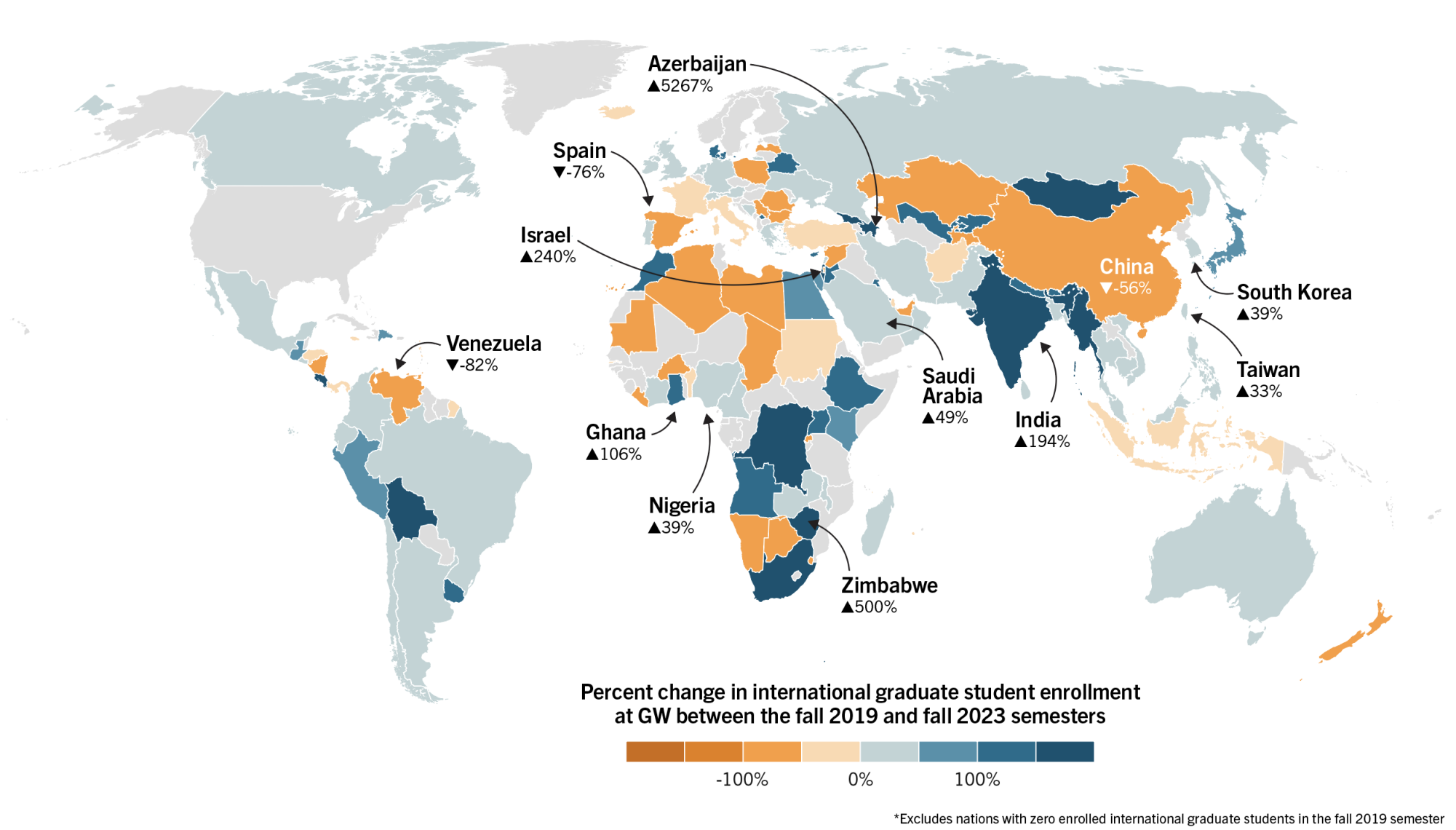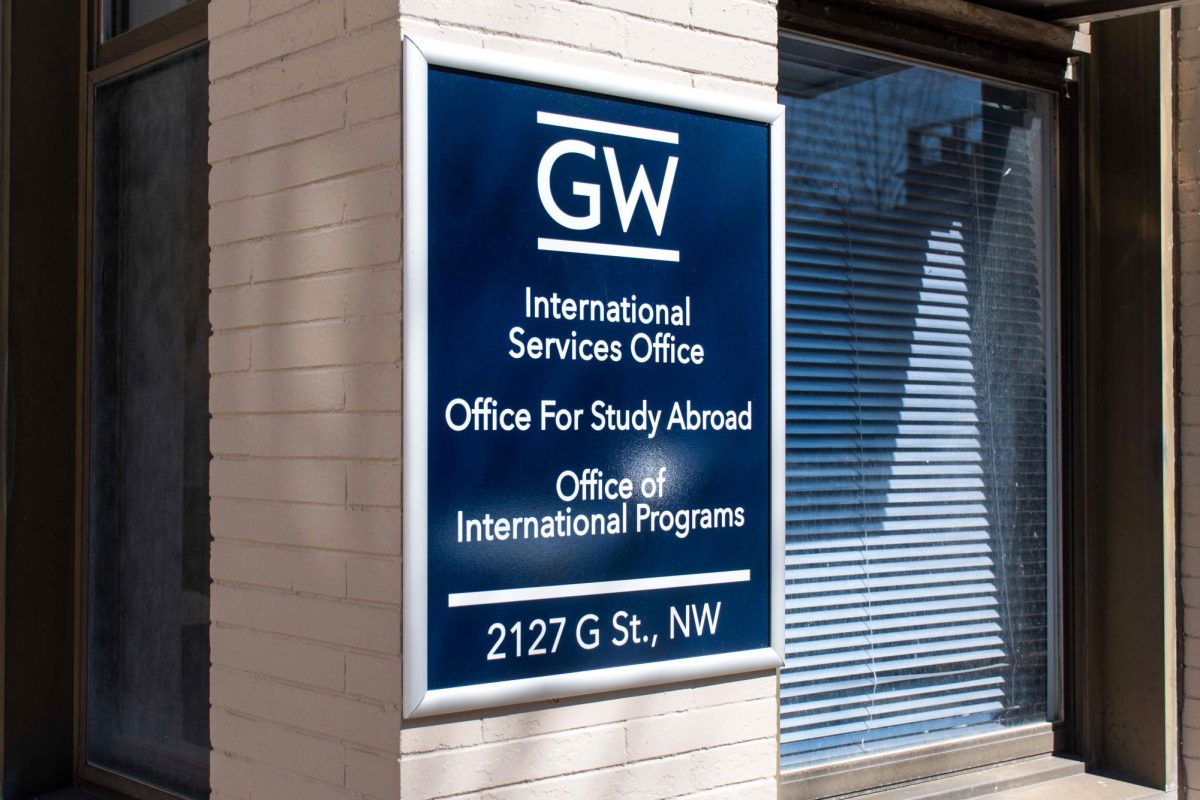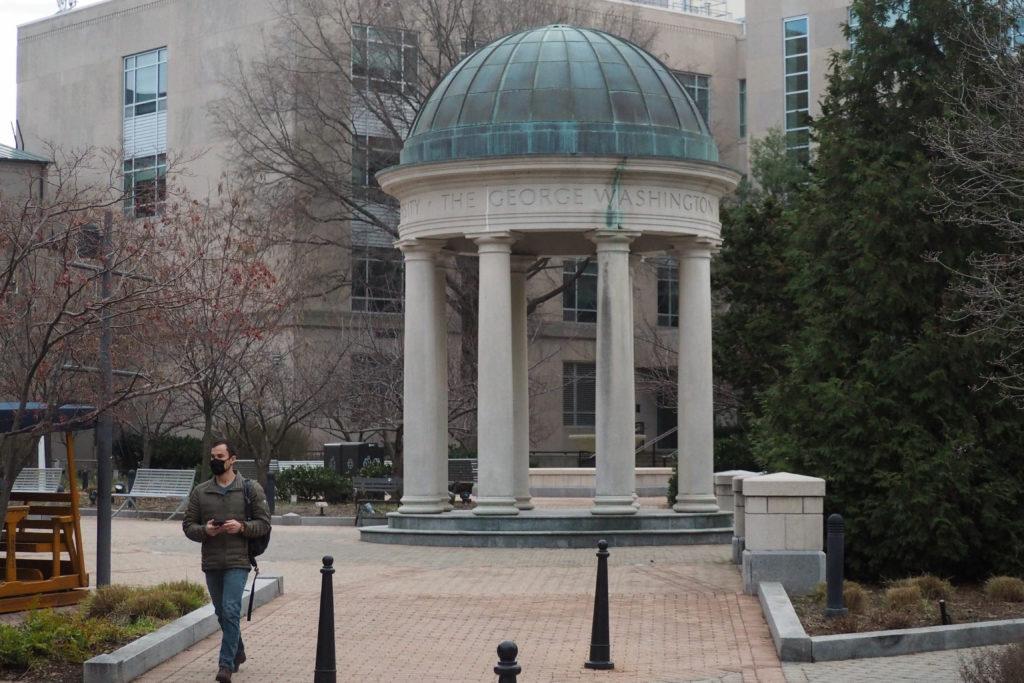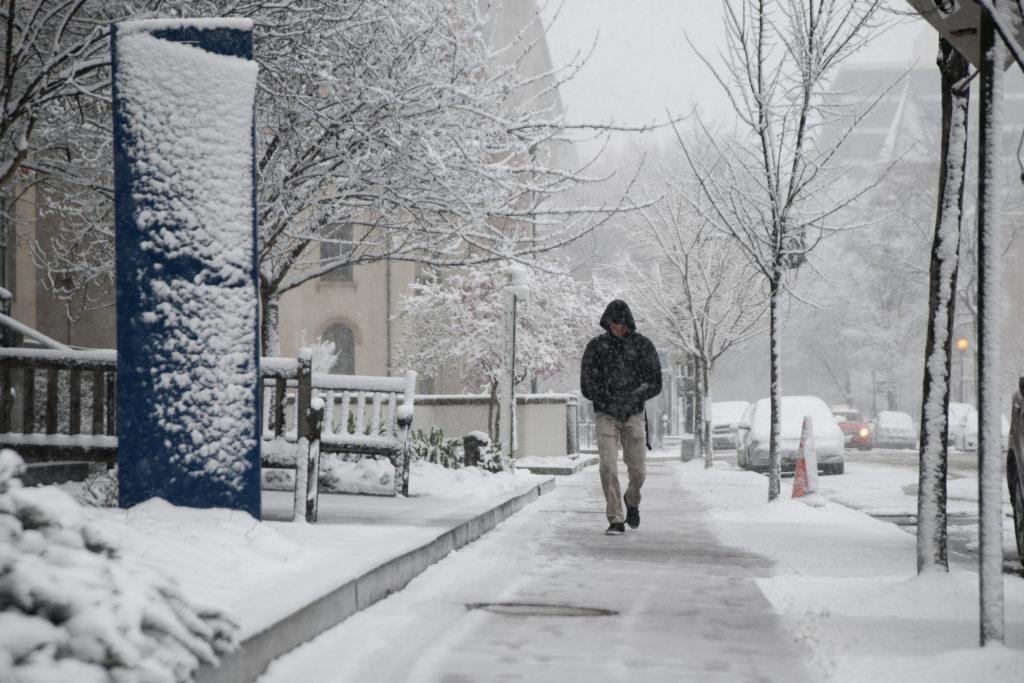International graduate student enrollment reached a post-pandemic high in 2023, signaling a recovery from the 2020 drop in enrollment.
International graduate student enrollment rose from 875 students in fall 2022 to 1,138 students in fall 2023, a 30.1 percent jump that surpasses pre-pandemic enrollment of 1,029 students in fall 2019. The uptick follows a trend that started in fall 2021 when the international graduate student population increased from 508 to 765, a 50.6 percent increase, which follows a sharp decline in graduate student enrollment in 2020 due to the COVID-19 pandemic.
Provost Chris Bracey said in a March Faculty Senate meeting that the rise in international students can be attributed to officials diversifying the University’s marketing to students outside the United States. The reduction in Chinese students studying at GW has been “significant,” Bracey said. China has been the top country of origin for international students in the U.S. for more than a decade.
Bracey said the increase at the graduate level is largely due to international enrollment in the School of Engineering and Applied Science, which increased from 586 enrolled international graduate students in 2022 to 726 in 2023.
“It’s important to appreciate that we’ve recovered to near pre-pandemic levels for graduate students, mostly attributable to SEAS, and much of this progress has occurred through diversifying our international student markets and attracting new students from throughout the world,” Bracey said at the meeting.
Bracey added that international enrollment from India, South Korea, Saudi Arabia, Azerbaijan and Nigeria has been increasing.
In 2021, officials announced they would develop outreach and recruitment strategies for international students, including the creation of “microtrend committees” to monitor short-term changes in the potential student market to account for an enrollment drop in international students. Committee members attended virtual college fairs and online forums to better connect with students from across the globe following the pandemic enrollment decline.
Mary Churchill, the director of the higher education program at Boston University, said COVID-19, Brexit and U.S. diplomatic relations are possible reasons for the growth in international graduate student enrollment.
Churchill said China’s zero-COVID policy, which aims to limit the spread of the virus as much as possible and closed China’s borders for three years, which was in place for longer than most other countries, reduced residents’ travel to and from other countries. As a result, international student enrollment from China dropped significantly nationwide and is only recently increasing due to a gradual relaxation of COVID-19 policies within the country.
In 2019, 1,441 graduate students from China enrolled at GW. Chinese graduate student enrollment had a post-pandemic peak at 690 students in 2022 and then dropped again to 631 students in 2023, according to the University’s enrollment dashboard.

Churchill said Brexit, or the United Kingdom’s departure from the European Union, made it more difficult for international students to enter the U.K. and halted the funding of students moving to the U.K. Churchill said the lack of EU funds caused the living expenses for international students in the U.K. to rise, leading to the students viewing the U.S. as a cheaper option.
Brexit forced the U.K. to back out of the EU’s Erasmus+ exchange program, cutting funding for students moving to the U.K. for school. The U.K. government implemented a new program, the Turing Scheme, in place of the Erasmus+ exchange program, but it does not grant international prospective graduate students funds to study in the U.K.
“With Brexit, it made it in some ways, much more difficult to go to the U.K. because it’s not an EU country anymore,” Churchill said.
Churchill said the Trump administration’s approach to international relations led to a “chill” in the relationship between the U.S. and other countries. The Biden administration has been diplomatically engaged with other countries, which has created a more welcoming environment within the U.S., Churchill said.
The Biden administration has made efforts to enable more international students to live in the country by expediting the process of getting a visa.
“It really creates in the classroom just a phenomenal environment where you just bring all these different countries and different people from all over the world into a single classroom of like 20 to 30 students,” Churchill said.
Teboho Moja, a professor of higher education at New York University, said international students are drawn to the U.S. because of the anticipated return on investment from earning a degree and the heightened prestige associated with American universities.
“U.S. institutions are much, much better than most institutions around the world, generally,” Moja said. “So high standards are presented about universities in the U.S., even though it’s not every university that meets that standard.”
Moja added that most countries have a greater demand for higher education than resources to accommodate their population. Moja said a higher demand for STEM-based programs in India has drawn many students to the U.S. in particular.
“I’ve been to India several times and talking to the undergrads the students always talk about how they’re studying engineering because the parents insist that they do engineering,” Moja said. “There’s that perception that there’s security in doing an engineering degree and you are sure to be set for life if you’ve got that.”




